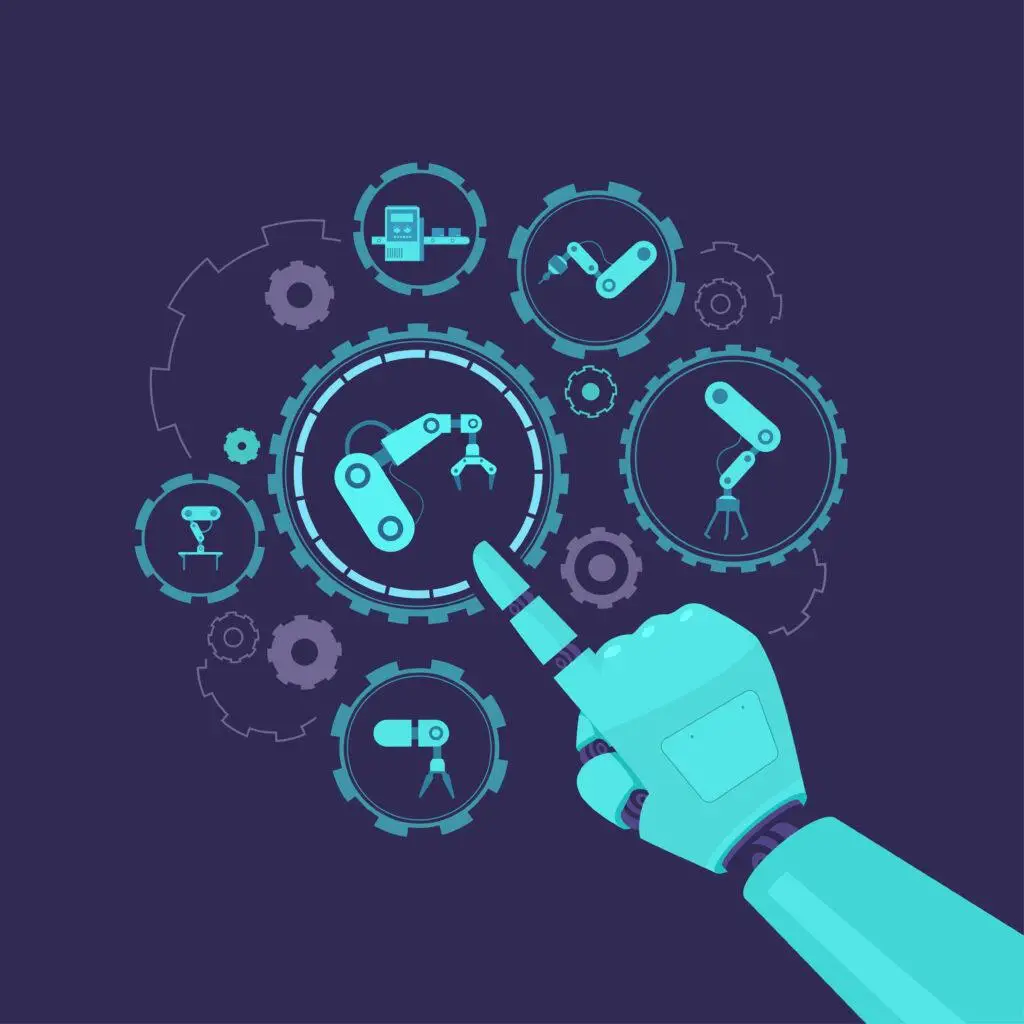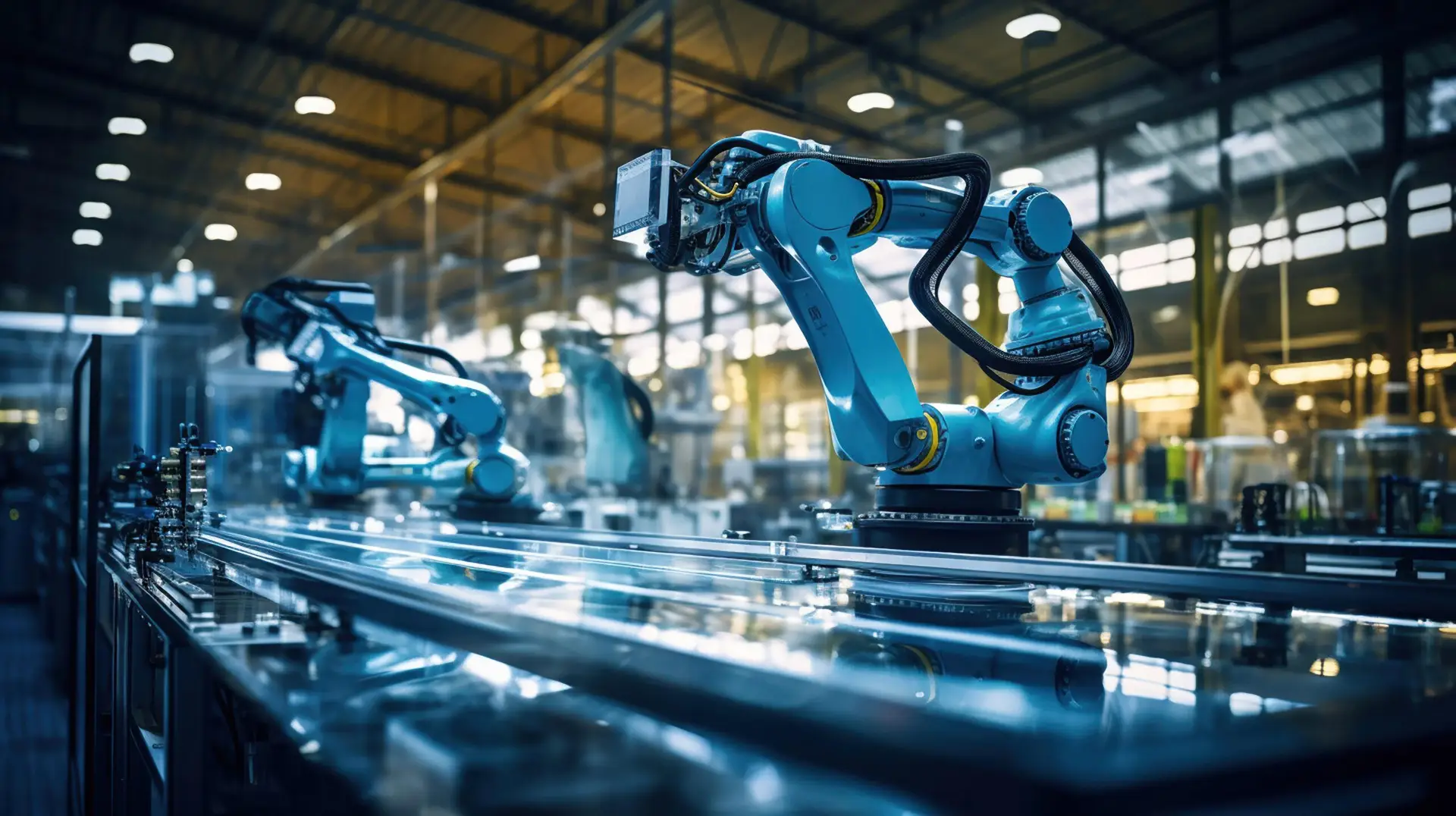AI in Manufacturing: Driving Saudi Arabia’s Vision 2030 Industrial Revolution
Introduction
AI in Manufacturing
The world took note when Saudi Arabia unveiled its Vision 2030 in 2016. This bold national transformation strategy wasn’t just about moving beyond oil; it was about reshaping the foundation of Saudi society, economy, and governance. At the heart of this vision lies a profound realization: to compete in a post-oil world, the Kingdom must become a leader in innovation. Artificial Intelligence (AI), particularly in manufacturing, is one of the most potent tools being deployed to realize this aspiration.
Once a sector dominated by traditional factories and manual labor, manufacturing in Saudi Arabia is undergoing a profound metamorphosis. Robotics, smart sensors, AI-driven predictive maintenance, and intelligent supply chains are becoming part of an ecosystem that redefines productivity. This isn’t just modernization—it’s a full-fledged industrial revolution, and it’s uniquely Saudi.
The Strategic Role of AI in Vision 2030
Vision 2030 aims to diversify Saudi Arabia’s economy, reduce unemployment, and stimulate innovation across all sectors. As of 2025, over two-thirds of Vision 2030’s key objectives are directly or indirectly dependent on digital technologies and artificial intelligence.
Recognizing this, the Kingdom established the Saudi Data and Artificial Intelligence Authority (SDAIA) in 2019 to spearhead national efforts in AI. SDAIA’s role includes building AI infrastructure, setting data policies, and attracting global talent and partnerships. In tandem with the Ministry of Industry and Mineral Resources, these institutions are laying the groundwork for a smart manufacturing renaissance.
AI is central to this strategy because it accelerates industrial productivity, enables efficient resource use, and reduces dependency on imported technologies. In the past, Saudi factories often relied on foreign consultants, labor, and supply chains. With AI, the Kingdom is building sovereign capabilities to innovate from within.
Industrial Applications of AI in Manufacturing

1. Smart Factories and Industry 4.0
Saudi manufacturers are transitioning to “smart factories digitally connected environments where machinery, processes, and systems are integrated and optimized using AI and IoT (Internet of Things). These factories minimize human error, enhance output, and allow real-time decision-making.
Aramco, SABIC, and Ma’aden have all initiated smart facility upgrades. At SABIC’s Jubail plant, AI algorithms now monitor emissions, production rates, and equipment status to minimize downtime and optimize chemical processing—a shift that once took hours or days to evaluate manually.
2. Predictive Maintenance
In the past, machinery failures meant long downtimes and costly repairs. Now, AI-powered systems analyze data from sensors installed on equipment to predict failures before they happen. This approach, called predictive maintenance, is being deployed in petrochemical plants, steel factories, and cement production lines.
For instance, the National Industrial Development and Logistics Program (NIDLP) has facilitated several AI-led pilot programs that reduced maintenance costs by up to 30% while extending equipment life.
3. Robotics and Automation
Collaborative robots (“cobots”) now work alongside humans in assembly lines, performing repetitive tasks like welding, sorting, and packaging with high accuracy. In the automotive sector, AI-powered robots are helping to automate parts manufacturing in upcoming NEOM-based industrial zones.
In partnership with Japanese and German robotics firms, Saudi Arabia is setting up assembly lines for electronics and small appliances, creating new manufacturing hubs aligned with the “Made in Saudi” brand.
4. Intelligent Supply Chains
AI is transforming supply chain management by improving inventory forecasting, logistics planning, and raw material sourcing. This is crucial in Saudi Arabia, where vast distances separate factories, ports, and distributors.
Companies like Bahri and Saudi Logistics Services (SAL) are using AI for route optimization and real-time shipment tracking. In warehouses, AI algorithms ensure stock levels are managed dynamically, reducing waste and improving delivery timelines.
Flagship Projects and Strategic Initiatives
Saudi Arabia isn’t just talking about AI. It’s backing its ambitions with multibillion-dollar projects that integrate AI at scale across industrial sectors.
1. Human: Saudi’s AI Brainchild
Launched in 2025 under the Public Investment Fund (PIF), Humain is Saudi Arabia’s answer to global AI dominance. It focuses on developing sovereign AI infrastructure, including a large language model for Arabic, powerful data centers, and training hubs for AI engineers. Though broader than just manufacturing, Humain provides the foundational AI capabilities that industrial sectors will leverage for smart automation.
2. The NVIDIA Partnership
In collaboration with NVIDIA, Saudi Arabia is building AI factories using up to 5,000 Blackwell GPUs, making it one of the largest AI deployments outside the US and China. These AI factories will support everything from digital twins of manufacturing plants to real-time simulations of industrial processes. Engineers trained in these environments will have access to frontier AI tools, further localizing technological expertise.
3. NEOM Industrial Cluster and Oxagon
NEOM is a Saudi Arabia’s futuristic megacity,is home to Oxagon, a city dedicated to advanced manufacturing and industrial innovation. Designed as the world’s first floating industrial city, Oxagon will host AI labs, R&D facilities, and factories powered entirely by renewable energy and smart systems. AI is expected to control everything from factory production cycles to urban logistics within the zone.
Economic Impact of AI-Driven Manufacturing
The financial case for integrating AI into manufacturing is compelling. A report by PwC estimates that AI could contribute $135 billion to Saudi Arabia’s non-oil GDP by 2030. A significant portion of this growth will come from manufacturing, driven by:
- Reduced operational costs: AI can lower energy use, maintenance, and labor inefficiencies.
- Faster product innovation: Simulations powered by AI allow companies to test new product designs virtually.
- Increased global competitiveness: “Made in Saudi” goods will meet higher global quality and consistency standards.
Beyond GDP figures, AI is also expected to spur job creation in high-skill domains such as data science, robotics engineering, and industrial design. The perception that AI destroys jobs is being replaced by the reality that it redefines them.
Human Capital: Training a Smart Workforce
Recognizing that AI is only as powerful as the minds that deploy it, Saudi Arabia is making massive investments in education and upskilling.
1. King Saud University Industrial Intelligence Program
Launched in collaboration with global AI leaders, this program is training Saudi students in robotics, mechatronics, AI programming, and digital twin modeling. It has produced over 2,000 graduates since 2021, many of whom are already working in Vision 2030-linked projects.
2. Technical and Vocational Training Corporation (TVTC)
TVTC has introduced more than 20 AI-focused modules in its nationwide curriculum, targeting technical school graduates and mid-career professionals. Its goal: to ensure that every factory worker, from welders to supervisors, understands how to work alongside AI systems.
3. Women in AI and Manufacturing
Encouragingly, more Saudi women are entering STEM fields, particularly in AI and engineering. Government-backed initiatives, such as “Tech Women 2030,” provide scholarships, mentorship, and job placements. Women are now leading robotics labs, AI start-ups, and digital transformation units across the Kingdom.
Challenges on the Road Ahead
Despite the Kingdom’s momentum, integrating AI into manufacturing at scale is not without hurdles.
1. Data Governance and Cybersecurity
Manufacturing processes generate vast amounts of sensitive data. Ensuring its protection from cyber threats and misuse is paramount. Saudi Arabia has introduced robust cybersecurity frameworks, but enforcing them uniformly across public and private sectors remains an ongoing task.
2. Dependence on Global Tech
While the Kingdom is developing local capabilities, it still relies heavily on global firms for core AI technologies. This creates vulnerabilities and underscores the need to accelerate local innovation through start-up incubators and tech sovereignty strategies.
3. Cultural Shift in Industry
Many factory owners and managers, especially in older industrial zones, are cautious about adopting AI. Changing mindsets—through awareness, pilot success stories, and government incentives—is critical to driving mass adoption.
Looking Ahead: A New Industrial Identity
Saudi Arabia’s bet on AI in manufacturing isn’t just about economic diversification. It’s about shaping a new national identity—one that is innovative, tech-driven, and globally respected.
Imagine a future where AI-operated smart factories in Riyadh manufacture solar panels, drones, and green tech devices. Where Saudi-made components are shipped to Europe, Asia, and Africa. Where young Saudis—women and men alike—lead robotics companies that were once dominated by foreign talent.
This future is no longer a distant vision. It is being built now in NEOM, in university labs, on factory floors, and in the code written by Saudi engineers.
Conclusion
Saudi Arabia’s embrace of AI in manufacturing, under the strategic umbrella of Vision 2030, is more than a policy; it’s a reimagining of the nation’s place in the global industrial order. With bold investments, strategic partnerships, and an unwavering focus on talent development, the Kingdom is not merely adapting to the Fourth Industrial Revolution—it is helping lead it.
From predictive analytics and robotics to smart logistics and sovereign AI models, the Kingdom is transforming its manufacturing base into a beacon of innovation. The journey ahead will have its challenges, but with sustained momentum, Saudi Arabia’s factories may soon hum not just with machines, but with the rhythm of a smarter, self-sustaining future.
Read article
How Semantic Brains Is Driving Digital Transformation in KSA


